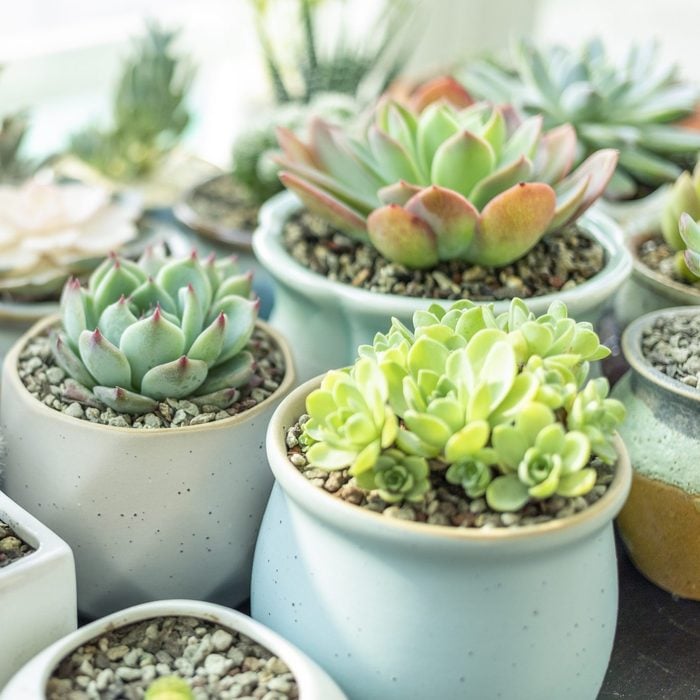
The best succulents for the home
If prickly, desert-bound cacti come to mind when you think of succulents, think again! There are more than 10,000 types of succulents around the world, according to the International Union for Conservation of Nature. Despite of the wide range of these plants you can still easily identify the ones you like with the help of the plant apps that offer unique features like plant identification. A famously easy-to-care-for plant category, succulents can thrive in arid conditions by storing water in their dense leaves, branches or trunks, so they’re ideal low-maintenance indoor plants. And while they do include those foreboding cacti of the American West, there’s a lot more to succulents than their spiny family members.
Many are low-light indoor plants and especially hard to kill, perfect for plant lovers who may be long on interest but short on time to care for their greenery. Succulents do well in a variety of conditions, generally need infrequent watering or repotting and can manage through long periods of benign neglect. They’re also surprisingly cute, complex, fascinating and ideal as indoor plants.
Here’s a look at 15 types of succulents, with tips on how to care for them and where to buy plants online. If you’ve chosen a spiky friend of the cactus variety, just be careful when opening the box!
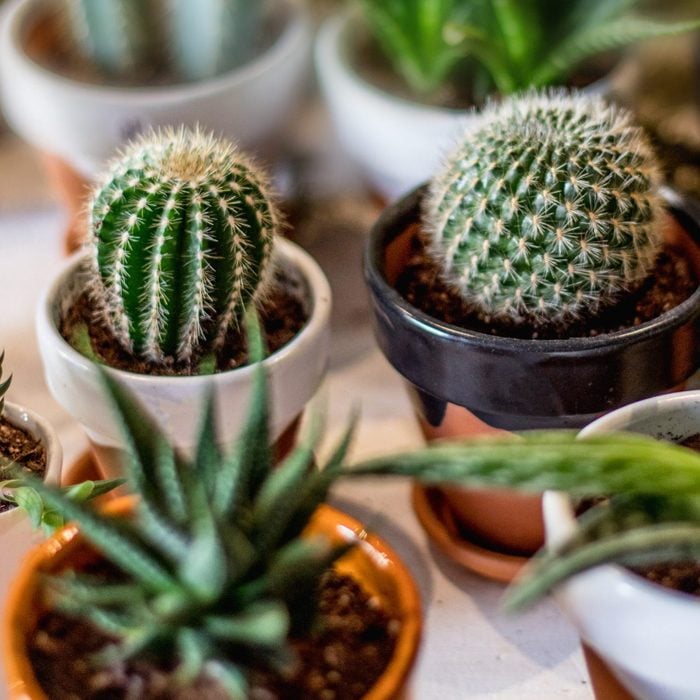
What is a succulent?
Succulent is the umbrella term for plants from more than 25 plant families, which include thousands of types of succulents. And although there’s a large range of characteristics among them, they’re typically classified as succulents for their ability to retain water for extended periods of time, so plant watering is simple. This allows them to thrive in dry settings and, in many cases, gives succulents their squat, bulbous appearance—those waxy, chubby leaves and stems are plump with the water on which the plant lives. Look inside a succulent leaf, stem or trunk, and you’ll find a gooey, water-retaining gelatinous substance, often in combination with a thick pulp.
A common question about the group of plants is whether cacti are succulents. While it is true that all cacti are succulents, not all succulents are cacti. One of the most common types of succulent plants, cacti are all about survival in a brutal desert climate. Their prickly spines deter predators, create shade for the plant, cut down on air flow, reduce water loss and capture moisture.
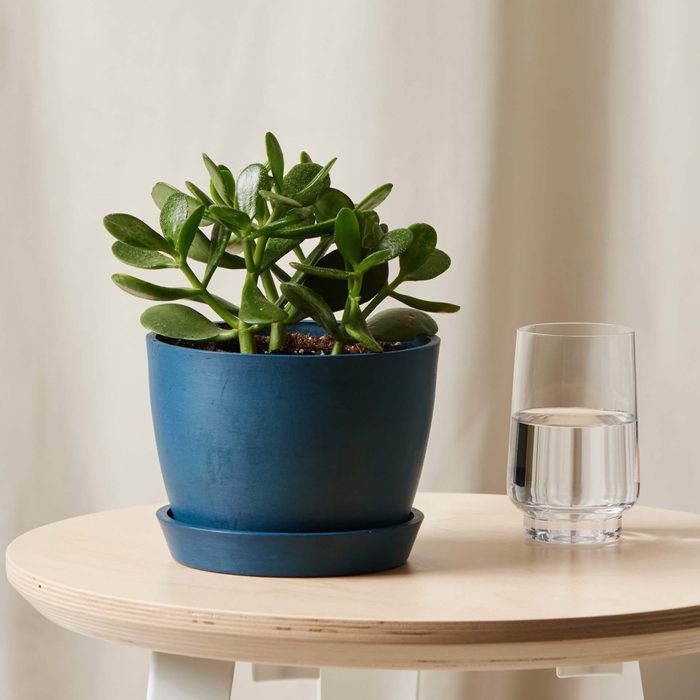
Jade plant
Crassula ovata
Among the most common succulents for indoor plant enthusiasts, jade plants are named for their pretty deep-green leaves, which grow in tight uniform bunches. They’re popular as bonsai plants too, thanks to their treelike form. Jade plant care is relatively simple: They do well in direct light and need to be watered every two weeks or so—less frequently in colder months. They’re a healthy, easy plant to grow and propagate from leaves. But watch for root rot (from overwatering), spider mites and mealybugs. Jade plants are mildly toxic to household animals, and their sap is a skin irritant to humans.
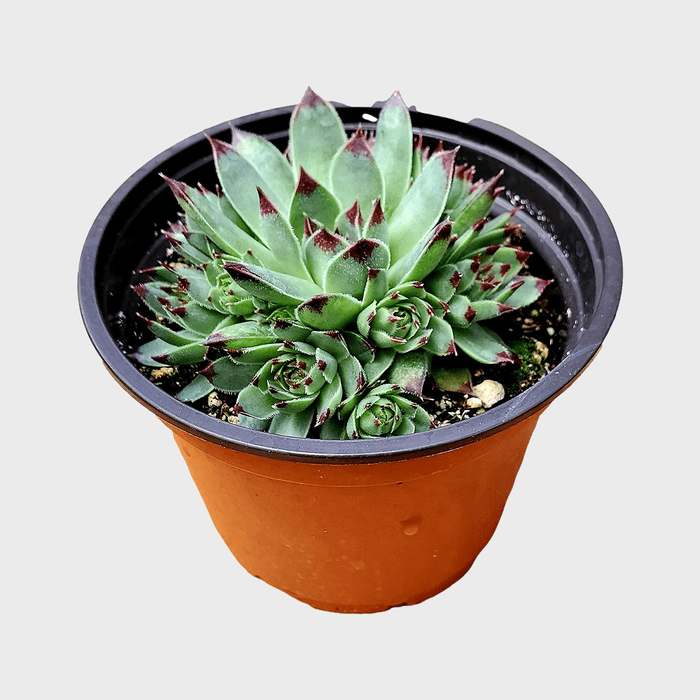
Sempervivum
Sempervivum
A member of the Crassulaceae family of plants, sempervivum (the name means “forever alive”) include several dozen varieties of flowering plants that are often referred to as houseleeks. We prefer their common moniker, hens and chicks, which was given for the squat, rosette-shaped main plant and the little “chicks” that sprout around it. These do well in well-drained soil or a mix of sand, perlite and soil, and can even thrive in a rock garden. Water them every few weeks and make sure the soil is completely dried before watering. Full or indirect light is fine, and they are pet-safe.
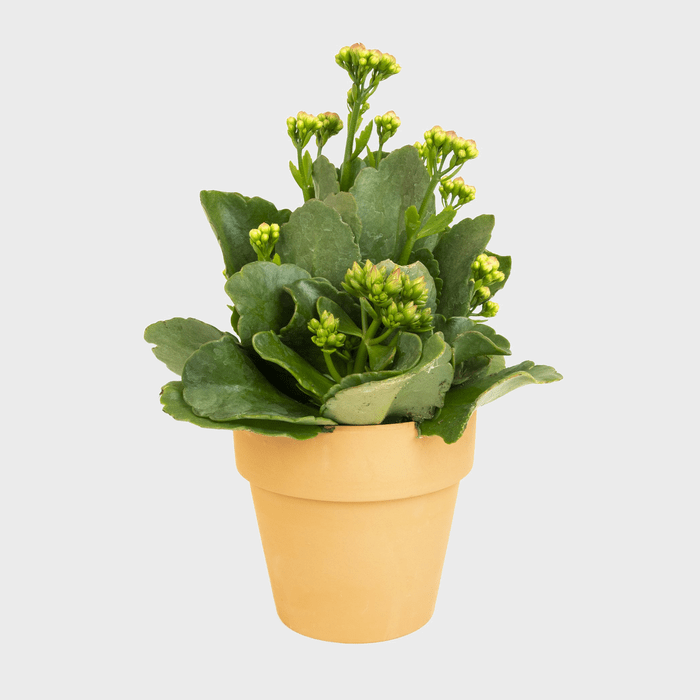
Kalanchoe
Kalanchoe blossfeldiana
Although there are more than 100 types of kalanchoe, the most common indoor plant is Kalanchoe blossfeldiana, an easy-to-care-for evergreen that blooms, particularly in cold-weather months, in small clusters of orange, pink, yellow or white flowers. Kalanchoe (it’s pronounced kal-un-KHO-ee—we’ve been saying it wrong all these years!) thrives in bright, indirect light and with well-drained soil. Make sure the soil dries out completely between each watering and that the plant gets 14 hours of darkness in fall and winter in order to produce blooms. These are great plants for propagating and trading or sharing cuttings, although we wouldn’t recommend sharing with your pets, as they’re mildly toxic.
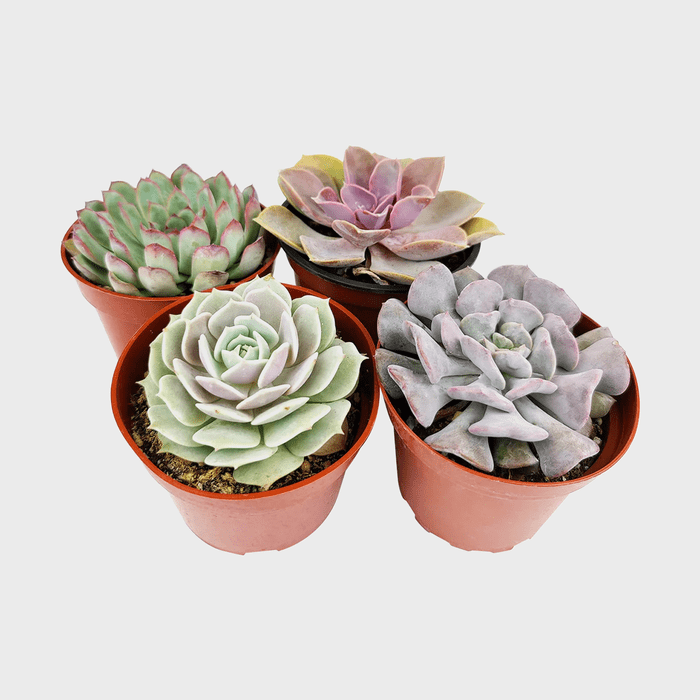
Echeveria
Echeveria
Another Crassulaceae family member with dozens and dozens of siblings, echeveria are pet-safe plants similar in appearance and behavior to sempervivum, enough so that they’re also called hens and chicks. These low-profile, rose-shaped plants come in a variety of colors and leaf shapes and look especially pretty when a few different types are clustered together in a container. Like most succulents, echeveria want well-drained soil and several hours of direct sun, and they do best in an unglazed ceramic container. Water them only when the soil is completely dry, and keep them away from cold or drafty windowsills.
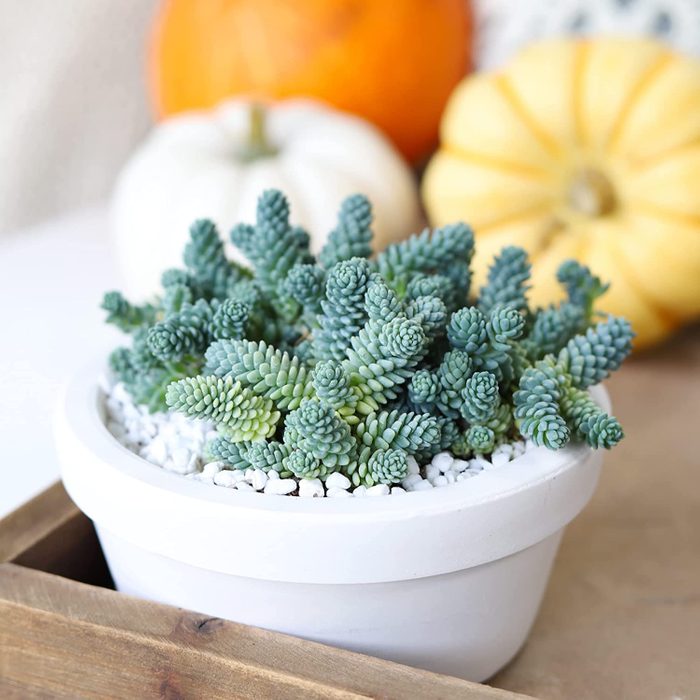
Sedum major
Sedum dasyphyllum
With its dusty blue-green color and tight clusters of pine-cone-like foliage, petite sedum major is an intriguing indoor succulent that also thrives as a ground cover in arid, Mediterranean-style gardens. Also called Corsican stonecrop, sedum major likes well-drained, sandy soil and bright, indirect light. When several sedum major plants are placed in containers near one another, they’ll spread out in a way that you can hardly tell one from another. These little mat-forming succulents bloom tiny white flowers in the summer and can be propagated from cuttings. They’re also considered nontoxic to pets.
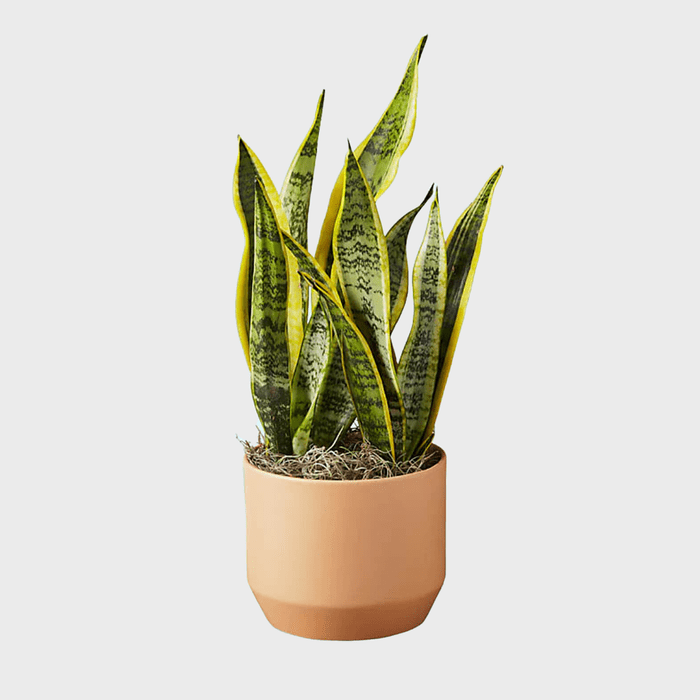
Snake plant
Dracaena trifasciata
If you’re looking for an indoor plant that’s tough to kill, look no further than the hardy, attractive snake plant. Plants classified as Dracaena trifasciata may differ in appearance, but they all have in common long, variegated, pointed leaves that usually stand upright. Snake plants are valued as air-purifying plants, and for followers of feng shui, they do more than clear the air of pollutants—they’re thought to absorb negative energy too. As with most types of succulents, snake plant care includes sandy soil and infrequent waterings. Their ability to thrive in most indoor plant lighting (low to bright light) makes them a suitable plant for almost any setting. Keep them away from domestic animals though, as they’re considered poisonous plants for dogs.
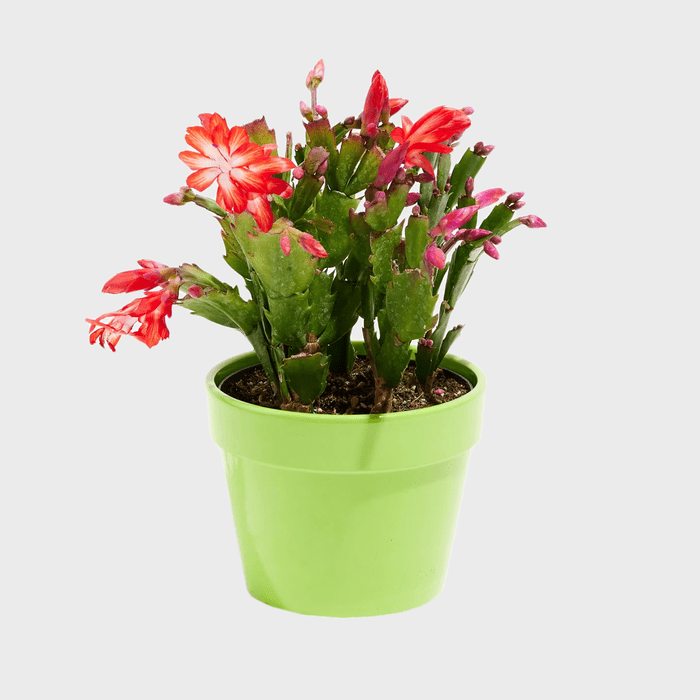
Christmas cactus
Schlumbergera bridgesii
A perennial favorite among indoor flowering plants, the Christmas cactus is so named because it tends to bloom in the fall and winter. Its segmented stems will multiply into an abundant plant, which can be easily propagated and shared. Plus, its orchid-like red, white, pink, yellow, orange or purple blooms add a splash of cheer to the cold season. In order to bloom, a Christmas cactus needs complete darkness for 13 to 15 hours a day—even if they’re in a room with artificial evening light, you’ll need to move them somewhere darker if you want them to bloom. And unlike most succulents, these are tropical plants that do well in humid settings and with frequent, but not saturating, watering. A Christmas cactus is not considered poisonous to pets.
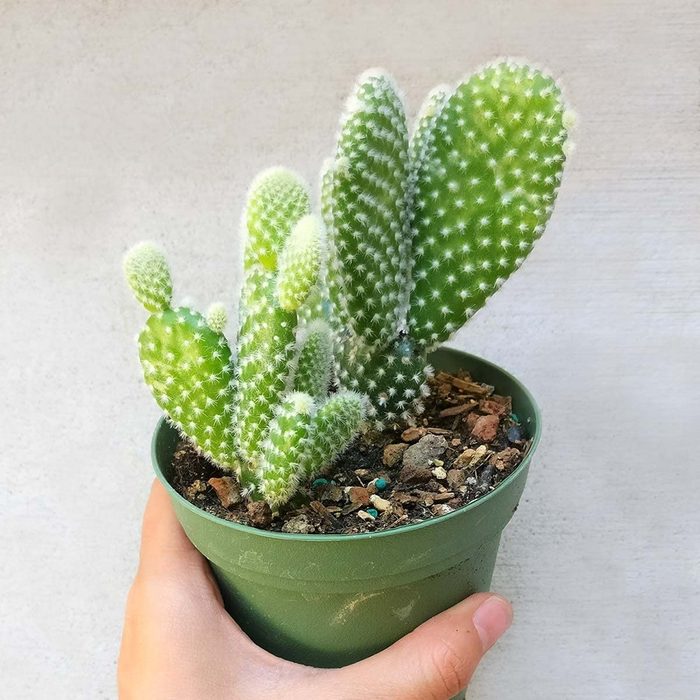
Bunny ear cactus
Opuntia microdasys
It’s got a cute name and a comical appearance, but the bunny ear cactus is no joke. Considered a traditional cactus, its “ears” are covered with ultra-fine barbs that will detach when touched. Those barbs can cause severe irritation if they’re not removed right away, so handle this “bunny” with caution, using heavy gardening gloves or even kitchen tongs when repotting or propagating. This desert cactus is native to Mexico and likes plenty of direct sun and infrequent watering. Prune your bunny ear if it gets too tall; this will encourage it to grow out, rather than up.
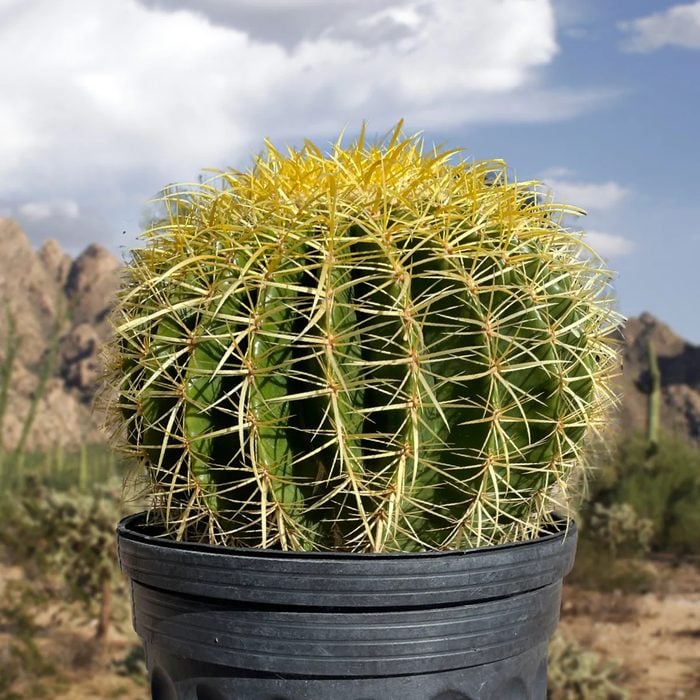
Golden barrel cactus
Echinocactus grusonii
The golden barrel, or golden ball cactus, is a small, slow-growing cactus whose rows of pointy barbs resemble a pincushion full of pins. A true desert cactus, this Mexico native likes full sun, well-drained, pebbly soil and, of course, infrequent watering. While the plant can get quite large and heavy, that process will take decades—so it will give you years of enjoyment as an indoor plant. Eventually, some varieties will send “pups” that cluster around the main barrel. The spines are not poisonous, but they are plentiful and painful, so these handle-with-care plants are best kept out of range of pets.
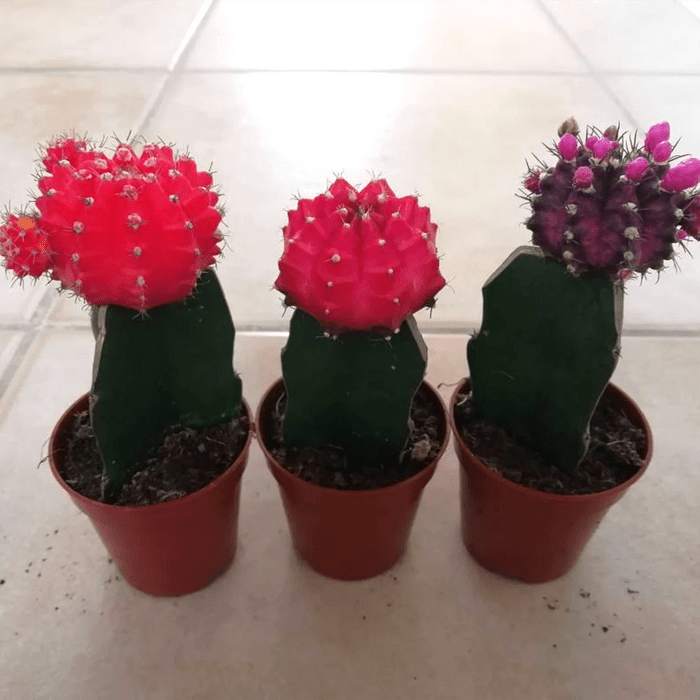
Moon cactus
Gymnocalycium mihanovichii
Among the most colorful of succulents, the moon cactus is a mutant whose bright-red, yellow or orange color comes from a lack of chlorophyll. They’re a popular addition to indoor cactus collections, with one caveat: Because they must be grafted onto a chlorophyll-producing host, moon cacti live only for a few years, even in the best circumstances. They prefer indirect light and the infrequent hydration typical of cacti. On rare occasions, a mature moon cactus may give off flowers in the spring and summer.
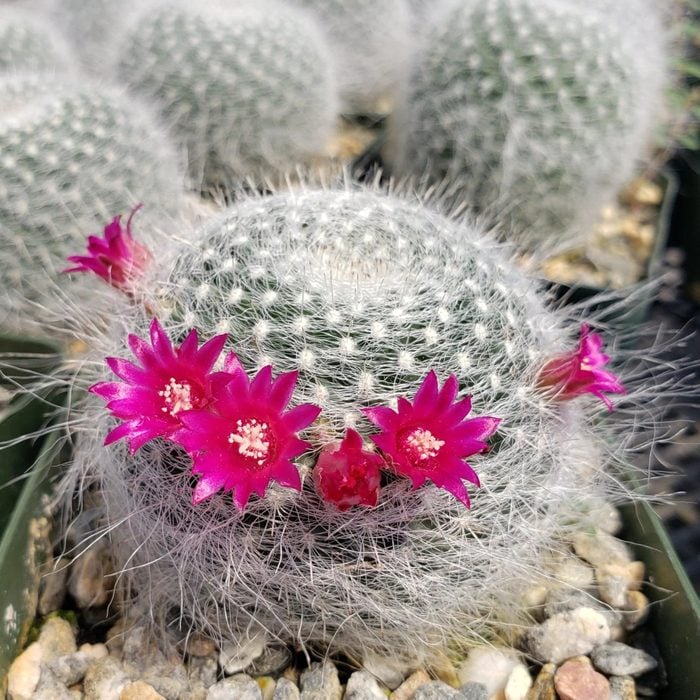
Pincushion cactus
Mammillaria
Pincushion cacti are among the hundreds of members of the Mammillaria genus and, as their name suggests, most resemble pincushions—round, squat and full of thousands of tiny thorns. Their most popular indoor plants include the old lady cactus, the fishhook cactus and the silken pincushion. Many varieties will sprout showy, colorful flowers that will turn to edible fruit. Pincushions are considered good starter cacti for those new to growing succulents, as they’re easy to care for, nontoxic to pets and require little attention. As with most types of succulents and cacti, go with the familiar care mantra: sandy, well-drained soil, infrequent watering and plenty of full sunlight.
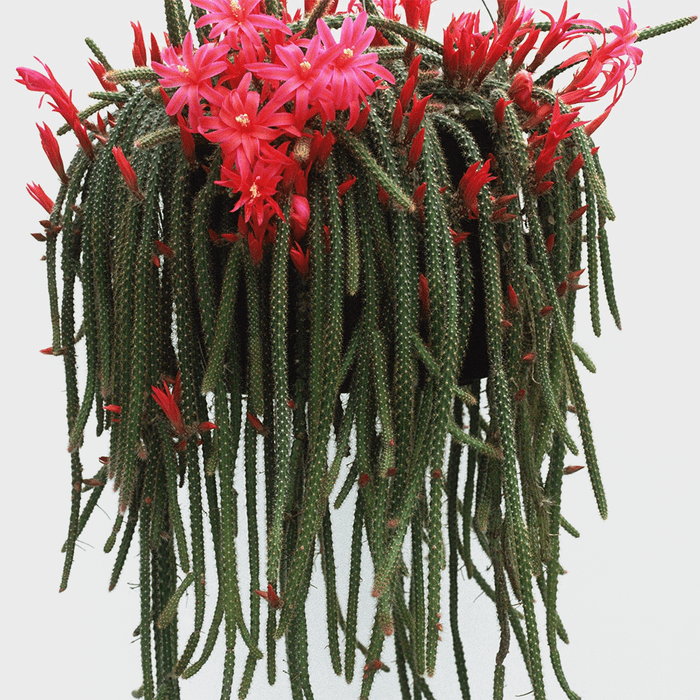
Rat tail cactus
Aporocactus flagelliformis
A particularly interesting member of an already fascinating family of plants, the rat tail cactus is distinct for its tail-like stems that can grow several feet long. This flowering cactus will throw off bright magenta-colored flowers that last a couple of days at a time. The thorn-covered “tails” will grow up to 12 inches per year and become quite dense. And while they’re great as hanging plants, you need to place these types of succulents in a location where humans or pets can’t accidentally brush up against them. They like loamy, well-drained soil and the occasional pruning—just remember to wear thick gloves!
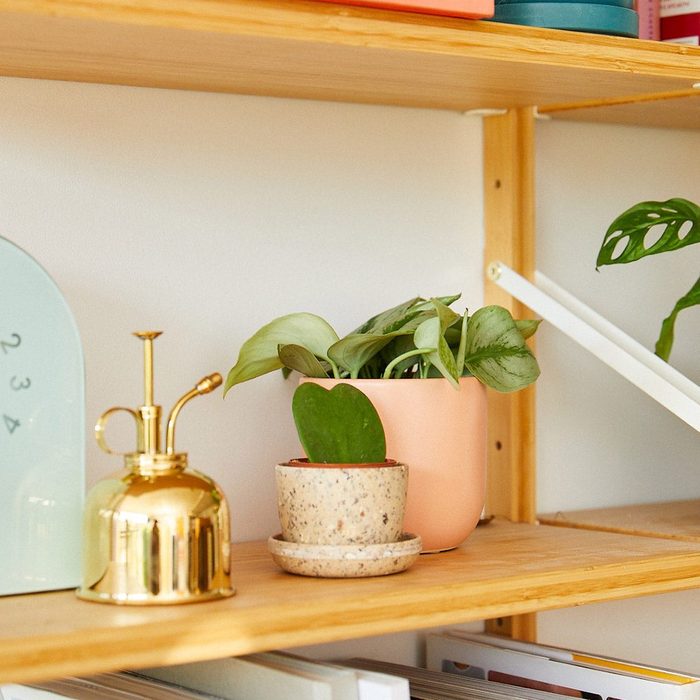
Hoya heart
Hoya kerrii
Also called a sweetheart plant or valentine hoya, hoya heart plants are usually sold as a novelty item, potted as a single heart-shaped leaf and often marketed for Valentine’s Day. However, if you want a hoya that will actually grow, you need to avoid the single-leaf variety and go for an established plant that will thrive, especially if it’s allowed to climb. Hoyas are epiphytes, also known as air plants, which means they get their sustenance from the environment around them, like a vertical support and grow well with a loose mixture of orchid bark, soil and perlite, plus several hours of direct sunlight and low watering. They’re considered nontoxic to people and pets.

Tiger jaw cactus
Faucaria tigrina
With its curious triangular leaves that grow in a clumping, spreading pattern, and its bright-yellow flowers that bloom every autumn, the petite tiger jaw cactus is a conversation piece in any indoor plant collection. Reaching a maximum of just 3 inches in height, tiger jaw cacti look good as part of a miniature cactus garden and are well-suited to a desk or kitchen windowsill—as long as they get plenty of direct or indirect light. Keep these types of succulents in well-drained soil, and water only when the soil is completely dry. They are nontoxic to pets and, despite the toothy name, safe to handle when repotting or propagating.
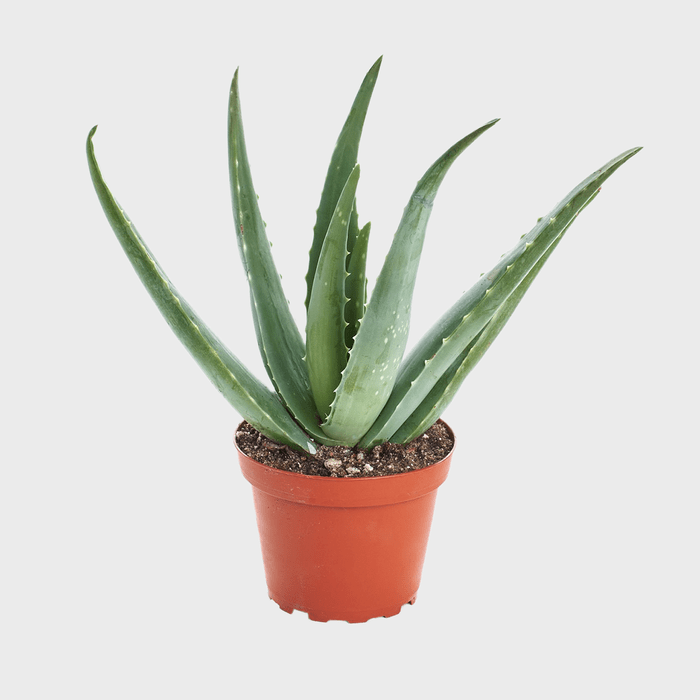
Aloe vera
Aloe vera
There’s hardly a better-known succulent than the multitasking aloe vera, a hardy plant that doubles as a natural cure for scrapes, sunburns and minor burns and as an ingredient in countless personal-care products. As an indoor plant, aloe plant care is easy, so long as you’ve provided sandy soil, several hours of indirect sunlight per day and watering only when its soil is dry. Aloe sends off “pups,” which can be propagated and shared. And although aloe vera juice is sold as a dietary supplement, ingesting large amounts, or consuming the wrong parts of the plant, can cause extreme digestive problems, so it’s better to use this medicinal plant topically and keep it away from domestic animals.
Source:
- International Union for Conservation of Nature: “Cactus and succulent plants: status survey and conservation action plan“
